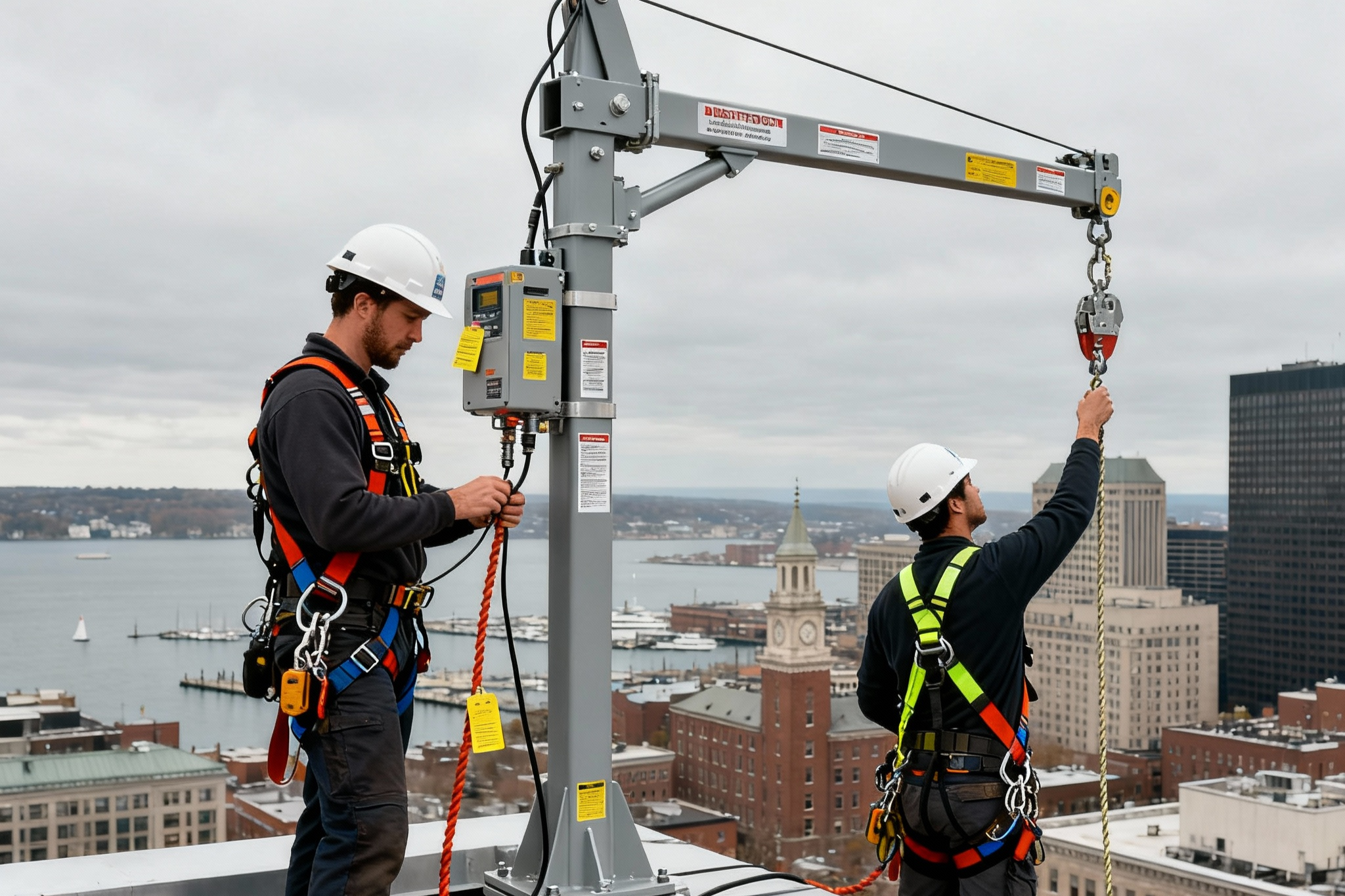
When window cleaning or facade repairs outgrow rope descent, davit systems step in to provide secure, repeatable access. For property managers and contractors in Boston, MA, davit arms offer a practical way to reach tough elevations without blocking sidewalks or relying on street permits every time.
What is a davit system—plain and simple?
A davit system uses a base mounted on the roof and a removable arm that supports rigging or a powered platform. Crews assemble the arm, connect hoists or lines, and move the load out past the parapet for a controlled drop. This modular approach fits the mix of historic and modern buildings found across Boston, MA.
Why choose davits over alternatives
Davit arms shine when you need predictable drops, minimal ground disruption, and quick setup. Instead of coordinating a truck-mounted boom on narrow streets in Boston, MA, teams stage on the roof and clear the facade with a smooth, engineered outreach.
Key components you’ll see on the roof
Every system has a base (sleeve or pedestal), a mast, and a boom that creates outreach beyond the edge. Rated tie-backs, hoists, and certified attachment points complete the setup. Clear labels and layout drawings help rotating vendors in Boston, MA, use the same equipment correctly throughout the season.
Permanent bases, portable arms
Many owners install permanent bases on roof lines and store the arms between service cycles. Crews bring only what they need, which is ideal for multi-building portfolios in Boston, MA. This split keeps the roof clean while preserving the ability to reach any drop line efficiently.
Roof interface and waterproofing
Penetrations require proper flashing and coordination with your roofer. Coastal weather and freeze–thaw cycles can stress poor details, so a watertight spec matters in Boston, MA. Non-penetrating options exist in special cases, but they demand careful engineering and verification.
Typical applications that fit davits well
Davit arms support window cleaning platforms, facade inspections, sign installs, and localized restoration. They’re especially useful on towers where parapets hide lower setbacks—common in parts of Boston, MA. With labeled tie-backs for outrigger beams, crews can also stage swing stages with confidence.
Safety, compliance, and training
Davit systems live within the broader rules for suspended access, including load testing, annual inspections, and competent-person oversight. Posting a concise usage diagram near the roof doors helps visiting technicians who may be new to Boston, MA. Short refreshers before each season reduce errors and keep logs consistent.
Handling wind, corners, and tricky geometry
Gusts off the harbor complicate rigging. Good practice includes weather thresholds, corner rollers, and planned transitions to avoid side loads on the boom. On recessed bays and courts seen around Boston, MA, a site-specific plan clarifies where to place bases so outreach can clear ornamentation and balconies safely.
Storage, transport, and changeovers
Arms break down into manageable pieces for carts or dollies, which makes changeovers fast between drops. Color-coding sections by building or elevation streamlines routines for crews working multiple sites in Boston, MA. A simple checklist (“pins, hoist, tag line, rescue kit”) prevents forgotten parts.
Budget and long-term value
Upfront costs cover engineering, bases, and certification, while the arms themselves serve for years with proper care. Owners in Boston, MA often see savings from fewer street closures, faster setups, and standardized training across vendors. Over a portfolio, that reliability becomes part of predictable maintenance planning.
A quick selection checklist
- Map intended drops and parapet heights for your property in Boston, MA.
- Confirm roof structure and preferred penetrations or sleeves.
- Choose boom outreach to clear cornices, signage, and setbacks typical in Boston, MA.
- Specify corrosion-resistant finishes and hardware that stand up to coastal air.
- Define tie-backs and compatible outrigger plans for swing stage work in Boston, MA.
- Set inspection, labeling, and training routines that new crews can follow at a glance.
Next step
Ready to see how roof-side equipment supports the platform itself? Read next: Outriggers—What They Are and How They Protect Workers to understand beam placement, counterweights, and tie-back strategies on projects in Boston, MA.
Get a practical plan for your facade access
If you’re weighing davits against other methods, we can walk your site, model outreach, and design a right-sized solution. Explore Fall protection to connect with our team for drawings, load testing, and a clear implementation path tailored to Boston, MA.


